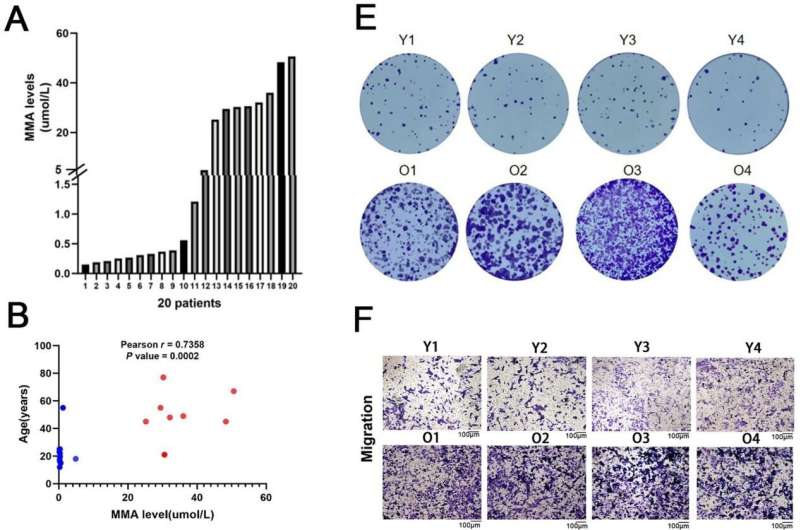This article has been reviewed according to Science X's editorial process and policies. Editors have highlighted the following attributes while ensuring the content's credibility:
fact-checked
proofread
Unraveling the age-related cellular changes in osteosarcoma progression

In a study published in the journal Genes & Diseases, scientists from Union Hospital, Tongji Medical College, and Huazhong University of Science and Technology delve into the molecular intricacies of osteosarcoma in the elderly. The team investigated senescent cells, cells that no longer divide or grow, and their influence on tumor progression. A spotlight was cast on methylmalonic acid (MMA), a compound found in elevated levels in the elderly, known to be associated with aggressive cancer characteristics.
The team's exploration aimed to decipher MMA's influence on osteosarcoma, focusing on its interplay with the MAFB gene, observed to be highly active in elderly osteosarcoma specimens. The findings were striking: Elevated MMA levels in the elderly enhanced the growth capabilities of osteosarcoma cells. More crucially, the researchers identified a pioneering molecular pathway in which MMA-induced alterations in the MAFB-NOTCH3 axis expedited osteosarcoma progression through the activation of PI3K-AKT pathways.
When the MAFB-NOTCH3 pathway was inhibited, osteosarcoma treatments using AKT inhibitors became markedly more effective. This work has underscored the significance of MAFB as a novel age-associated biomarker for osteosarcoma, suggesting an innovative therapeutic combination targeting the MAFB-NOTCH3 axis and AKT inhibition.
This research not only bridges our understanding gap about osteosarcoma's distinct progression in elderly patients but also carries the beacon of hope for enhancing treatment efficacy for this age bracket. The journey toward more effective, targeted treatments for elderly osteosarcoma patients has taken a pivotal step forward.
More information: Zhenhao Zhang et al, Cellular senescence-driven transcriptional reprogramming of the MAFB/NOTCH3 axis activates the PI3K/AKT pathway and promotes osteosarcoma progression, Genes & Diseases (2023). DOI: 10.1016/j.gendis.2023.02.028




















